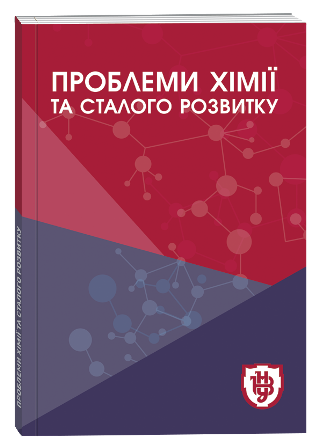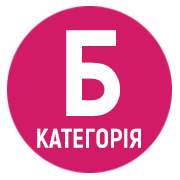WATER QUALITY IN THE IRPIN RIVER IN THE POST-MILITARY PERIOD
DOI:
https://doi.org/10.32782/pcsd-2025-3-8Keywords:
water quality, hostilities, pollution, ecological index, organic substances, heavy metals, Irpin RiverAbstract
Military operations lead to significant changes in the functioning of aquatic ecosystems. Both direct and indirect consequences are manifest in the ecological, social, and economic spheres. Assessment of the current state of water resources in areas where hostilities have continued is necessary to study the scale and specifics of their pollution and predict long-term consequences.The goal of our study was to analyse changes in the water quality of the Irpin River in the post-military period. A comparative characteristic of water samples taken in 2024 with the average annual data of state monitoring of the quality of surface waters of the Irpin River (hydrochemical station in the village of Gostomel) for the period 2020–2023 was carried out. The observation points were chosen within the Kyiv region (Irpin, Demydiv village, Kozarovychi village), taking into account the spatial difference in the impact of military actions and the intensity of anthropogenic load on the river ecosystem.On the basis of a comparative analysis of the values of ecological indices (IE) of the water quality of the Irpin River in the pre-war and post-war periods, deterioration of its quality was established. In particular, in the pre-war period (2020–2021) according to the worst values (EI = 3.98) it belonged to class III, quality category 4 (“satisfactory”, “slightly polluted” waters), and in the post-war period (2022-2023) (EI = 4.83) – to class III, quality category 5 (“mediocre”, “moderately polluted” with a tendency to “satisfactory”, “slightly polluted”) in accordance with the data of the state monitoring point of surface waters on the Irpin River (Gostomel village).The decline in water quality was primarily reflected in the increase in the level of organic pollution and the deterioration of trophic and saprobiological characteristics. The main sources of organic matter (mainly nitrogen and phosphorus compounds) are untreated municipal wastewater (Irpin city, Gostomel village), as well as runoff from agricultural lands and private households (Demydiv village, Kozarovychi village). This, in combination with the summer increase in water temperature, leads to a deficit of dissolved oxygen (≤ 4 mgO2/dm3) and a violation of the natural ecological balance in the river.The limniophilous (lake) conditions with slowed water exchange have formed in the flooded areas of the valley. This causes a deterioration in the oxygen regime and contributes to the accumulation of organic compounds in the water. The degree of anthropogenic load on the surrounding areas determines the dynamics of self-purification processes and the speed of recovery of the hydroecosystem.
References
Hapich H., Novitskyi R., Onopriienko D., Dent D., Roubik H. Water security consequences of the Russia-Ukraine war and the post-war outlook. Water Security, 2024. 21, 100167. URL: https://doi.org/10.1016/j.wasec.2024.100167
Yutilova K., Adamski A. War-induced threats to environmental resilience in Ukraine and recovery perspectives. Geographical Studies, 2025. (178). P. 137–152. DOI:10.4467/20833113PG.25.007.21636
Кірейцева Г. В., Циганенко-Дзюбенко I. Ю. Екологічна оцінка впливу військових дій на гідромережу Київської області та стратегії відновлення водних екосистем. Збiрник наукових праць НУК. 2025. №1. С. 199–207. URL: https://doi.org/10.15589/znp2025.1(499).28
Gleick P., Vyshnevskyi V., Shevchuk S. Rivers and water systems as weapons and casualties of the Russia– Ukraine War. Earth's Future. 2023. 11: e2023EF003910. URL: https://agupubs.onlinelibrary.wiley.com/doi/abs/10.1029/2023EF003910
Stelmakh V., Melniichuk M., Melnyk O., & Tokarchuk I. Hydro-ecological state of Ukrainian Water bodies under the influence of military actions. Rocznik Ochrona Środowiska, 2023. 25. P. 174–187. URL: https://bibliotekanauki.pl/articles/27315751.pdf
Ladyka M., & Starodubtsev V. Water reservoirs and the war in Ukraine: environmental problems. EUREKA: Life Sciences, 2022. #6. P. 36–43. URL: https://doi.org/10.21303/2504-5695.2022.002664
Стародубцев В.М., Ладика М.М., У Жофань, Паламарчук С.П., Наумовська О.І. Героїчна оборона та екологічна драма в долині річки Ірпінь. International scientific journal «Grail of Science». 2022. № 23 (December 2022). C. 172–182. URL: https://doi.org/10.36074/grail-of-science.23.12.2022.28
Vlasova, O., Shevchenko, A., Shevchenko, I., & Kozytsky, O. (2023). Monitoring Of Water Bodies And Reclaimed Lands Affected By Warfare Using Satellite Data. Land Reclamation and Water Management. 2023. 2. P. 59–68. URL: https://doi.org/10.31073/mivg202302-371
Строкаль В. П., Бережняк Є. М., Наумовська О. І., Вагалюк Л. В., Ладика М. М., Сербенюк Г. А., ... Павлюк С. Д. Вплив російської агресії на стан природних ресурсів України: монографія. За заг. ред. ВП Строкаль. Київ: Видавничий центр НУБіП України. 2023. С. 131–138. URL: https://dglib.nubip.edu.ua/items/4d10546d-6fb3-4ebf-b29a-75f0335d008d
Ladyka Maryna, Wu Ruofan. Destroying of dams due to war in Ukraine: environmental consequences (case study Irpin Valley flooding). Proceedings of the XXXIV International Scientific and Practical Conference. Bergen, Norway. 2024. Р. 14–17. URL: https://isg-konf.com/modern-problems-of-humanity-and-scientific-ways-of-solving-them/
Хільчевський В. К., Гребінь В. В. Деякі аспекти щодо стану територій районів річкових басейнів та моніторингу вод під час вторгнення Росії в Україну (2022 р.). Гідрологія, гідрохімія і гідроекологія. 2022. 3(65). С. 6–14. URL: https://doi.org/10.17721/2306-5680.2022.3.1.
Благополучна А. Г., Ляховська Н. О., Парахненко В. Г. Еколого-економічні збитки від повномасштабного військового вторгнення росії в Україну. Економічні горизонти. 2022. 3(21), С. 53–61. URL: https://doi.org/10.31499/2616-5236.3(21).2022.263572
Циганенко-Дзюбенко І. Ю., Гандзюра В. П., Алпатова О. М., Демчук Л. І., Хом’як І. В., Вовк В. М. Гідрохімічний статус пост-мілітарних водних екосистем с. Мощун, Київської області. Екологічні науки. 2023. (46). С. 53–58. URL: http://eprints.zu.edu.ua/37230/1/9.pdf
Берія В. Д., Гандзюра В. П. Зміни еколого-популяційних особливостей угруповань літорального зоопланктону водних екосистем річки Ірпінь та її приток у весняно-літній період 2024 року. Екологічні науки. 2024. № 4 (55). С. 49–52. URL: https://doi.org/10.32846/2306-9716/2024.eco.4-55.8
Державний водний кадастр. Розділ 1. Поверхневі води. Серія 2. Щорічні дані про якість поверхневих вод суші. Частина 1. Річка і канали. Частина 2. Озера та водосховища. Центральна геофізична обсерваторія імені Бориса Срезневського. 2020 р.
Державний водний кадастр. Розділ 1. Поверхневі води. Серія 2. Щорічні дані про якість поверхневих вод суші. Частина 1. Річка і канали. Частина 2. Озера та водосховища. Центральна геофізична обсерваторія імені Бориса Срезневського. 2021 р.
Державний водний кадастр. Розділ 1. Поверхневі води. Серія 2. Щорічні дані про якість поверхневих вод суші. Частина 1. Річка і канали. Частина 2. Озера та водосховища. Центральна геофізична обсерваторія імені Бориса Срезневського. 2022 р.
Державний водний кадастр. Розділ 1. Поверхневі води. Серія 2. Щорічні дані про якість поверхневих вод суші. Частина 1. Річка і канали. Частина 2. Озера та водосховища. Центральна геофізична обсерваторія імені Бориса Срезневського. 2023 р.
ДСТУ ISO 5667-14:2005. Якість води. Відбирання проб. Частина 14. Настанови щодо забезпечення якості відбирання та оброблення проб природних вод. Київ Держспоживстандарт України. 2006. 21 с.
Методика екологічної оцінки якості поверхневих вод за відповідними категоріями. Затверджено Мінеко- безпеки України від 31.03.98 р. №44 і погоджено з держгідрометром та Держводгоспом України / Автори Романенко В.Д., Жулинський В.М., Оксіюк О.П. та ін. К.:СИМВОЛ-Т. 1998. 48 с.
Писанко Я. І. Особливості структурно-функціональної організації техногенно зміненої водної екосистеми гирлової ділянки річки Ірпінь. Автореф. дис. канд. тех. наук. Київ. 2019. 24 с. URL: https://nau.edu.ua/site/variables/news/2019/4/avtoref%20Pisanko.pdf








